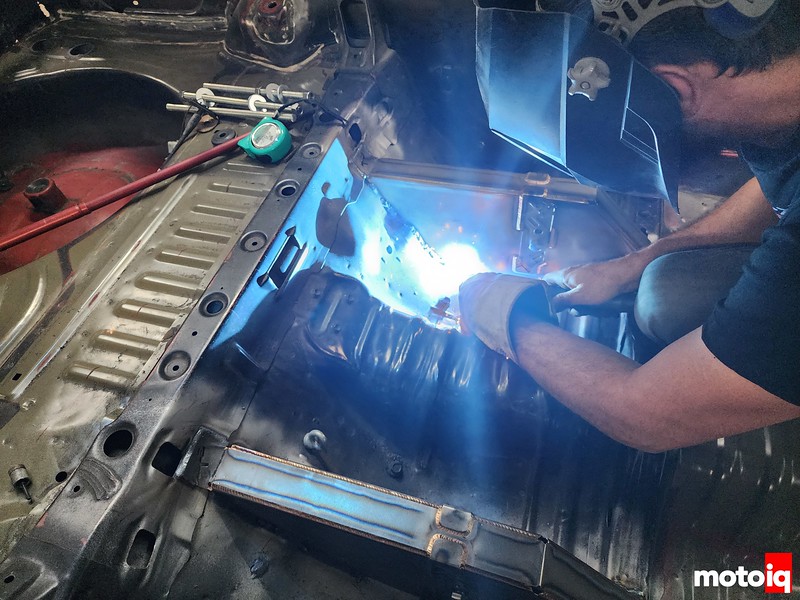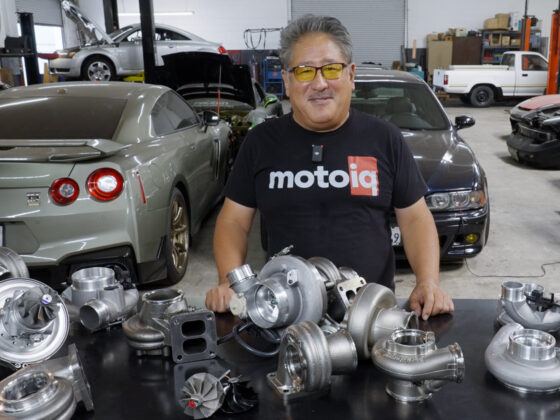
In this installment of Project AE86, we continue with our suspension mods brought to you by Techno Toy Tuning or T3. As we said in our first installment T3 makes a lot of parts to modernize vintage Japanese cars and we are taking full advantage of their catalog in our project car!

On really bad thing in the AE86’s rear suspension is the location of the trailing arms for the 5-link rear suspension. When the car is lowered, the super short upper links point rather steeply to the ground and the lower links also point toward the ground. This puts the rear suspension into pro-squat, where engine torque loading compresses and preloads the rear suspension. Braking torque makes the rear suspension rise. The suspension’s instant center is also moved toward the car’s rear and is close to the rear axle. This makes the response to engine torque and braking pretty violent. If you spin the wheels in an AE86, you thus get very violent wheel hop, especially if you have a welded or LSD diff. This not only loses traction but can break parts in the drivetrain. When you compress the suspension by preloading you also lose traction due to the artificial stiffening of the rear suspension. When the rear of the car goes up under braking you are also potentially losing rear braking traction as well as this exaggerates forward weight transfer. Finally, the short upper links at an extreme angle can cause binding and wheel lifting in cornering as well as toe steer, causing understeer.
T3 fixes this with their equal-length trailing arm kit.

The equal-length trailing arm kit has these boxes that weld inside the car allowing the trailing arm’s upper mount to be moved up and forward, correcting their position in a lowered car. These are much like the old TRD N2 conversion kit but better. The T3 boxes are stronger than the TRD parts and act like rear subframe connectors to give the old AE86 chassis some much-needed stiffness. The amount of anti-squat can also be adjusted by moving the front of the trailing arms into one of two holes.
The trailing arms themselves are made of strong machined aluminum and have large rod end bearings for long life. The bearings are right and left-hand threaded so adjusting them to get the proper differential pinion angle will be easy. 
When the AE86 is lowered the Panhard rod geometry is also messed up. To work right, the Panhard rod should be parallel to the ground at ride height. When the car is lowered the Panhard rod tilts to the right, this causes the car to jack up in left-hand turns and rachet down in right-hand turns. This isn’t good for handling. To fix this T3 makes an aluminum Panhard and a relocation kit.
The Panhard rod is made of stiff aluminum and use rod end bearings, eliminating the stock squishy rubber bushings. It is right and left-hand threaded to make it easy to center the axle in the car.




6 comments
Well, that’ll do it! It’s actually interesting to me how many pretty well regarded cars moved to equal length 4-link rear suspension instead of… well, many other things. Not messing with setting anything up in CAD and going through the motions right now, but are there any issues with the upper links and lower links not being in the same plane, or “maybe in theory but not really”?
They have to be out of plane if you are going to have anti-squat which any 4 link needs at least a little of.
I meant in terms of the upper links being further inboard on the axle, to be clear; a lot of the implementation I’ve seen of, for example, 4-links under rally cars the box that was added here would contain top and bottom links instead of just top.
I suspect that some of this upper link stuff was done for interior packaging like it was on the FB RX-7 but ugh dealing with the consequences of that decision.
In this case, they are in the same location as stock. The factory doesn’t do this because they want to have a rear seat.
Mike, any thoughts as to whether it’d be worth using those boxes to add chassis rigidity if you’re converting to 3 link, or is it sort of moot at that point, since you’d be permanently tying the cage to the chassis at that point to provide positive location for the middle upper link anyway?
One of these days I’ll get started on my rotary 86, I swear!
You would have to do one in a three-link conversion. Don’t do a short upper link,